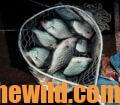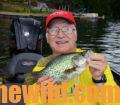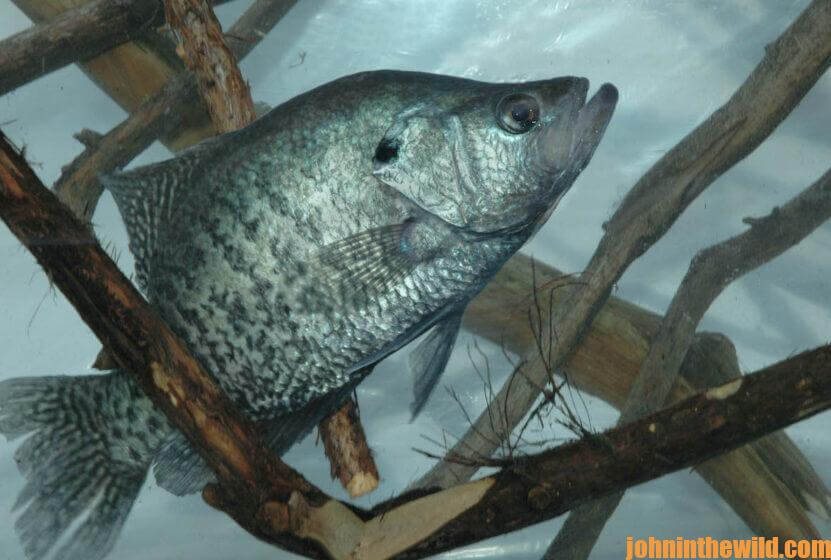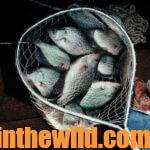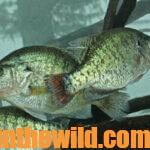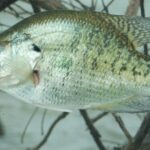Editor’s Note: Don’t bet on the crappie spawn in March, particularly if a cold front hits. Don’t spend your money or your vacation time on a fishing trip during March, expecting to find crappie spawning in shallow water. Although crappie usually spawn then, you may not locate them actively spawning and/or feeding in shallow water on the spring day you fish. I’ve learned strategies that help me take crappie almost every time I fish in the spring, and I always bet against the spawn. Let’s look at some ways to catch spawning crappie when they’re not holding in shallow water to lay their eggs.
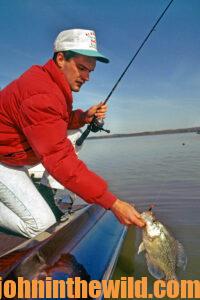 Fish for Crappie in the Middles of Coves:
Fish for Crappie in the Middles of Coves:
In many areas, you’ll find crappie spawning in shallow-water coves and bays off the main river channel or the main creek channels. But when a cold front hits, fish will leave these shallow-water spawning sites. Then look for crappie in the middle of a cove in deep water. The fish may be suspended, not holding on any cover or brush. Remember, when the fish don’t spawn, they primarily search for deeper water to hold in, until they can return to the banks. Always build brush shelters in the centers of the coves to provide places for crappie to congregate when foul weather runs them off the banks.
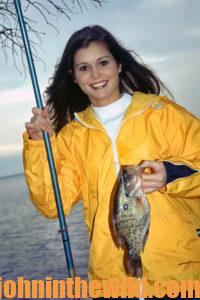 Make Set-Outs for Crappie:
Make Set-Outs for Crappie:
I learned another deadly strategy for spawning crappie from the late Red Cotton, a well-known crappier from West Point, Mississippi, who made set-outs. Cotton utilized beaver sticks to lure in and hold passing crappie until he could catch them. As Cotton explained to me, “I stick beaver sticks, poles from 4-6 feet long that beavers have gnawed all of the bark off, in the mud in the bottoms of shallow cover with little or no cover where crappie normally spawn – usually about 15-yards away from a bank. I’ll set-out the poles 10- to 12-yards apart, so thetips are visible above the water. Just prior to the spawn, during the spawn and after the spawn, I average taking one to two crappie around each beaver stick in a day of fishing with a fiberglass pole and a jig.” Cotton used a B‘n’M graphite pole (https://www.bnmpoles.com/products/bgjp) with 4 feet of 8-pound-test line and a 1/32-ounce jig. By twitching the end of the pole, Cotton made the jig hop as he used the pole to swim the bait around and up and down the set-outs.
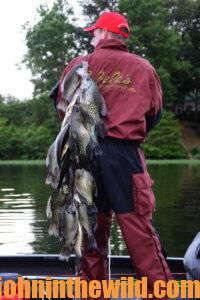
To learn more about crappie fishing, check out John E. Phillips’ book, “Crappie – How to Catch Them Spring and Summer,” available in Kindle, print and Audible versions at http://amzn.to/WGaJLT. You may have to copy and paste this link into your browser. (When you click on the books, notice on the left where Amazon says you can read and hear 10% of the book for free). On the right side of the page and below the offer for a free Audible trial, you can click on Buy the Audible book.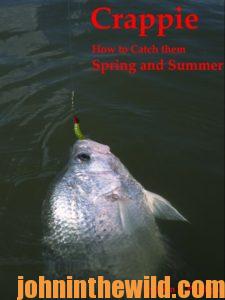
Tomorrow: Fish Floods & Beat the Crappie Spawn

